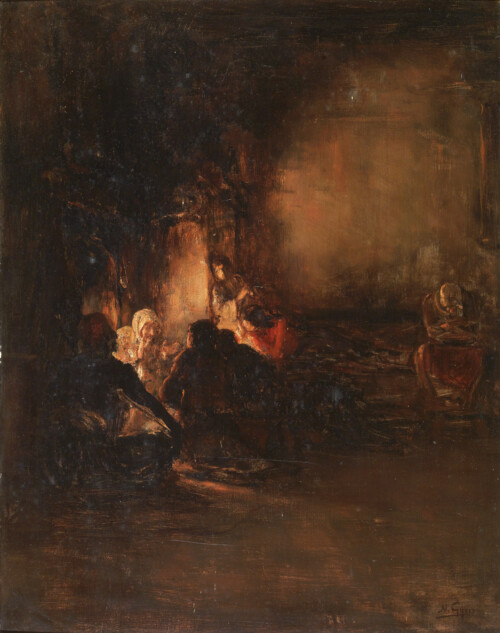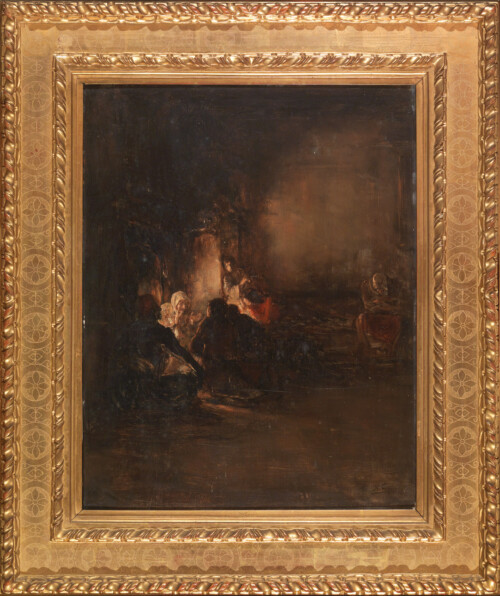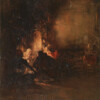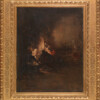| 19 |
Greek, 1842 -1901
By the fire
oil on panel
signed lower right
48 x 37 cm
PROVENANCE
private collection, Athens
LITERATURE
N. Misirli, Gysis, Adam Editions, Athens 1995, no. 124, p. 181, illustrated
| 60 000 / 80 000 € | |
Nikolaos Gysis was born in the village of Sklavochori, on the island of Tinos in 1842, an island with a long artistic history. His family moved to Athens in 1850.
As a young boy Gysis showed an early inclination to drawing and at the tender age of eight attended art lessons at the School of Fine Arts, Athens. In 1854, at the age of twelve, when it was legal to start studying, he officially begun his studies and graduated ten years later, in 1864. This formed the foundation of his artistic education.
A year after the completion of his studies in Athens, he furthered his education at the Royal Academy of Fine Art, Munich on a scholarship from the Panagia Evangelistria of Tinos Foundation. There he was taught among others from the famous German painter Karl Theodor von Piloty. From then onwards, he mostly lived in Munich for the rest of his life.
Gysis was soon incorporated into the German artistic scene, and became one of the main representatives of the Greek artistic movement referred to as the ‘Munich School’. This can be seen in the painting ‘News of Victory of 1871’ which deals with the Franco-Prussian War, and the painting ‘Apotheosis of Bavaria’.
At the beginning of the 1870s, Gysis returned to Greece where he lived for a few years. During this time, he produced a series of paintings with more avowedly Greek themes, such as the ‘Carnival in Athens’ and the ‘Engagement Ceremony’.
In 1873, he travels to Asia Minor with his lifetime friend, Nikiforos Lytras, where he will produce a large number of sketches that will form the base for some of his finest works with oriental theme.
Soon he is disappointed from the Athenian artistic circles and decides to return to Munich.
From 1886 onwards, Gysis was appointed a professor at The Academy of Fine Arts, Munich, in which time his work gradually evolved from detailed realistic depictions to singular impressionist compositions. Towards the end of his life, in the 1890s, he took a turn towards more religious themes.
His work is housed in prominent museums and private collections in Greece, Germany and elsewhere, notably: The National Gallery of Greece, The Averoff Gallery, The Leventis Gallery, The Katsigras Collection, the Koutlides Collection, The National Bank of Greece and many other public and private collections.
Nelly Misirli in her book Gysis, 1995, comments on the work ‘By the Fire’:
‘Το σκοτεινό χώρο στο έργο ‘Παρά τη Εστία’ μετατρέπει σε φανταστικό σκηνικό η φωτιά που καίει στη μέση της ομήγυρης, πότε εξαϋλώνοντας τις μορφές και πότε διαγράφοντας τις ως όγκους με φωτεινό περίγραμμα. Από την ένταση του σκιοφωτισμού προκύπτει η εντύπωση ενός αυτόφωτου πυρήνα…’



